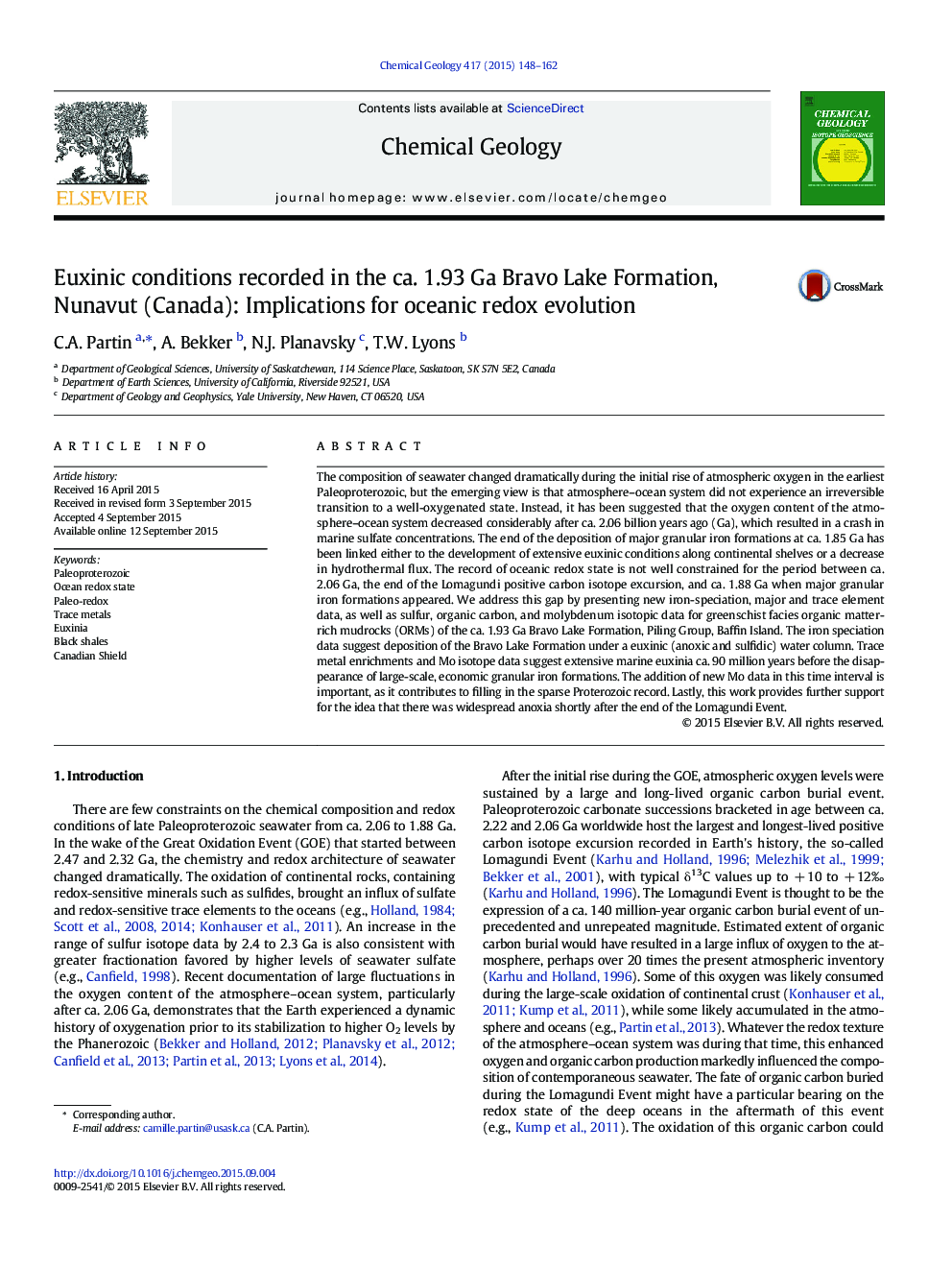| کد مقاله | کد نشریه | سال انتشار | مقاله انگلیسی | نسخه تمام متن |
|---|---|---|---|---|
| 6436253 | 1637557 | 2015 | 15 صفحه PDF | دانلود رایگان |

• We present Fe–C–S-trace metal systematics as recorded by the upper Piling Group.
• Euxinia is indicated by iron speciation and S- and Mo-isotope data.
• We document euxinia between the Lomagundi Event and 1.88 Ga iron formation deposition.
The composition of seawater changed dramatically during the initial rise of atmospheric oxygen in the earliest Paleoproterozoic, but the emerging view is that atmosphere–ocean system did not experience an irreversible transition to a well-oxygenated state. Instead, it has been suggested that the oxygen content of the atmosphere–ocean system decreased considerably after ca. 2.06 billion years ago (Ga), which resulted in a crash in marine sulfate concentrations. The end of the deposition of major granular iron formations at ca. 1.85 Ga has been linked either to the development of extensive euxinic conditions along continental shelves or a decrease in hydrothermal flux. The record of oceanic redox state is not well constrained for the period between ca. 2.06 Ga, the end of the Lomagundi positive carbon isotope excursion, and ca. 1.88 Ga when major granular iron formations appeared. We address this gap by presenting new iron-speciation, major and trace element data, as well as sulfur, organic carbon, and molybdenum isotopic data for greenschist facies organic matter-rich mudrocks (ORMs) of the ca. 1.93 Ga Bravo Lake Formation, Piling Group, Baffin Island. The iron speciation data suggest deposition of the Bravo Lake Formation under a euxinic (anoxic and sulfidic) water column. Trace metal enrichments and Mo isotope data suggest extensive marine euxinia ca. 90 million years before the disappearance of large-scale, economic granular iron formations. The addition of new Mo data in this time interval is important, as it contributes to filling in the sparse Proterozoic record. Lastly, this work provides further support for the idea that there was widespread anoxia shortly after the end of the Lomagundi Event.
Journal: Chemical Geology - Volume 417, 6 December 2015, Pages 148–162